MIRISCH ON ‘M’--In an article on its propaganda website, eerily named “The Source,” Metro boasts: “It’s official: Measure M heads to November ballot.” The subhead makes the spin clearer: “More Mobility, Movement, Motion, Maintenance focus of Metro’s Sales Tax Ballot Measure.”
Of course, that’s how Metro is going to try to hard-sell the new Forever Tax.
Quite frankly, it would be more appropriate to have written that the “M” in Measure M stands for:
More Money, Mismanagement, Malfeasance and Misinformation make up Metro’s Sales Tax Ballot Measure.
As a transit advocate for a forward-thinking, future-oriented, fully-integrated transit system which democratizes public transportation by providing point-to-point, on demand mobility, I’m going to go into a level of detail which may be a bit of inside baseball for those who basically just want to know whether they should support Metro’s Forever Tax or not.
For those who just want the down and dirty, I’m going to start this essay with a summary of bullet points.
Metro is claiming the “M” in Measure M stands for “Mobility, Movement, Motion, Maintenance.” It actually stands for: More Money, Mismanagement, Malfeasance and Misinformation.
More Money
- Measure M is a Forever Tax, which will generate hundreds of billions of dollars.
- Measure M effectively doubles (after the expiration of Measure R) our countywide transportation tax. It raises our county sales tax to 10% or more in parts of the county, among the highest in the nation.
- Sales tax is a notoriously regressive tax, which disproportionally impacts the poorest and most vulnerable among us.
- The way the plan has been put together to garner political support rather than, first and foremost, to advance mobility, Metro seems more concerned with passing the tax than mobility itself.
Mismanagement
- Metro has increased its operating budget successively to $5.6 billion, yet is suffering from a “ridership slump” (LA Times).
- Metro offers no viable first/last mile solutions, which are crucial for a first-class mobility system.
- Measure M’s proposed projects include politically-motivated projects at the expense of mobility-motivated ones. The proposed Sepulveda Pass Tunnel is the poster-child for wasteful spending.
- Metro’s mantra seems to be: “Overpromise and underdeliver.” In attempting to be all things to all people, they are making contradictory promises to various parts of the county in order to try to win support for the Forever Tax.
- Measure M’s funding mechanisms are inherently unfair: the measure would make important parts of the county, such as the Gateway Cities and the South Bay, wait decades for much-needed infrastructure upgrades.
Malfeasance
- Metro continues to act like it is under the Consent Decree, as it was for over a decade, because its Measure M spending plan aggravates social injustice while increasing racial discrimination. This is why the Bus Riders’ Union and other civil rights organizations strongly oppose the measure.
- Metro’s safety record is questionable. The Blue Line is one of the most dangerous and deadly commuter light rail lines in the country.
- The recently opened Expo Line covers 15.2 miles from Santa Monica to Downtown LA. It takes close to an hour. This is expensive, inefficient, unmodern transportation, which provides questionable value-for-taxpayer-dollars.
- A federal judge recent ruled that Metro has acted in an “arbitrary and capricious” manner in planning transit routes, and has violated federal environmental law. Metro painted the ruling as a “victory,” because the judge did not vacate the record of decision (ROD) and allowed Metro to continue to seek federal grant funding. In other words, Metro only cares about the money.
- Metro’s corporate governance is rigged and undemocratic. Residents of 62% of the county are underrepresented on the Metro board, while the city of LA has a bloc which gives it outsized voting power. As the board makes the spending decisions about all funds - including, ultimately, how the Measure M funds would be spent — the principle of “one person/one vote” needs to be adhered to before Metro is given more money.
Misinformation
- The idea that passing Measure M and giving Metro the proceeds of the Forever Tax will “solve traffic problems” is a myth. Metro’s name for Measure M, “the Los Angeles County Traffic Improvement Plan” is nothing if not deceptive.
- Metro has raised taxes three times, increased spending significantly, yet ridership has not increased. Traffic has not improved.
- Measure M is not a “ground up” tax which deserves support from the residents of LA County. It is a cynical political ploy which aims at spreading transit crumbs throughout the County with the primary goal of winning votes, not increasing mobility.
- Metro’s plan is backwards-looking rather than forwards-thinking. We need to better take advantage of advances in transportation technology, including the rapid development of autonomous vehicles, to create an integrated transportation system which offers all residents of the county a first-choice for mobility and which democratizes public transportation.
Who should favor Measure M, the Forever Tax?
Corporate welfare fans; crony capitalists; politicians who are looking for campaign cash and favors; commuters who are happy with second class service; transportation nostalgiacs who don’t feel advances in transportation technology should be integrated into a modern transit system; people who don’t mind funding agencies who have repeatedly broken past promises.
Who should oppose Measure M, the Forever Tax?
People concerned with social justice and/or fiscal responsibility; people who want to reduce racial discrimination; those who want a public transportation system for everyone; people who want a forward-thinking, visionary transportation system with the goal of point-to-point on-demand mobility within public transportation; people who doen’t trust massive governmental agencies with a documented record of poor decision-making; those who feel that forever is a long, long time...
Who benefits most?
- The Transportation/Infrastructure Industrial Complex: politically connected corporations like Parsons Brinckerhoff & Co. ; construction companies; engineering companies; construction unions.
- Developers who use transit as an excuse to overdevelop and an alibi to densify.
- “Mobility” advocacy and booster organizations, who receive funding from the Transportation/Infrastructure Industrial Complex.
- Empire-building politicians (who then name subway stations after themselves)
Who benefits the least?
What a YES vote means.
- Among the highest sales tax rates in the nation. Forever.
- More construction, more maintenance, not necessarily more transit solutions.
- Cities and areas outside of the city of Los Angeles will continue to be second-class transportation citizens and will need to continue to be satisfied with transit crumbs and scraps from Metro’s table.
- Wasted opportunities and planned obsolescence, as traditional rail projects, including inefficient light rail, continue to provide expensive transportation alternatives with long commute times.
- Politically motivated spending on projects which will do little or nothing to increase mobility in the county.
- The ability of the Metro board to divert funding from all the projects being touted in the Measure M propaganda to other projects which benefit their friends and patrons. And the inability of the citizens of LA County to do anything about it...
- More broken promises.
- NO real solutions to the county’s traffic problems.
What a NO vote means.
- Sending a message to Metro that we are unwilling to throw good money after bad money. Metro has raised taxes three successive times - and fares numerous times — without an accompanying increase in service, mobility or ridership.
- Acknowledgement that future-oriented mobility needs to be at the top of Metro’s agenda. Solutions for the future need to look to disruptive and transformative developments in transit technology, such as autonomous vehicles.
- Support for an integrated plan which puts mobility, not politics first.
- An unwillingness to pass another regressive tax, which disproportionately impacts the most vulnerable among us.
- Recognition that Metro Board governance needs to be changed so that all residents of the county are equitably represented, and that the city of Los Angeles’s leaders need to do more than pay lip service to the 62% of the county’s residents who live in the other 87 cities and unincorporated county.
- Support for social, racial and geographical justice.
- Acknowledgment that forever is a long, long time, and that a Forever Tax is not the answer.
#
That’ll do it for the Executive Summary of the Measure M. You don’t really need to know that much more in order to understand just how bad an idea Metro’s Forever Tax is. But for those who like inside baseball, here’s the more detailed breakdown of the Forever Tax, Measure M. Enjoy!
More Money
Metro’s mantra seems to be “Show us the money!” It sometimes seems that the agency’s mission is more sucking up and spending money, rather than mobility itself.
We can see Metro’s addiction to taxpayer dollars by looking at Metro’s operating budget. Metro’s operating budget has increased from some $3 billion to over $5.6 billion in a few short years.
So to deal with Metro’s jonesing for public dollars, this time it’s a Forever Tax, folks.
Yep, that’s right: in contrast to Measure R, the new Measure M is a half-cent sales tax increase which has no sunset, no end, and which keeps the faucet of taxpayer dollars running forever. What’s more, Measure M eliminates the sunset date for Measure R, converting it, too, to a Forever Tax.
Consequently, Measure M, the Forever Tax, effectively doubles the transit tax rate after Measure R expires, and brings the sales tax up to close to 10% throughout the County (and over 10% in certain areas). The Forever Tax would generate literally hundreds of billions of dollars and raise our sales tax to among the highest in the entire nation.
It is a blank check of the highest magnitude, because despite all the assurances of “strict oversight,” it is ultimately the undemocratic Metro board which decides how the money is being spent.
Mismanagement
For all the public funds Metro has taken to satisfy its thirst for money, for all the billions in increased budget, we haven’t seen anything close to the development of an integrated system of public transportation which serves the needs of the entire county. We haven’t seen an increase in ridership. We haven’t seen better service. We haven’t seen better mobility or a decrease in racial discrimination or an increase in social justice. And we haven’t seen a decrease in traffic.
What we’ve seen is pretty simple: a bigger budget.
While it’s clear Metro is not concerned at all with giving the residents of LA County the best mobility value-for-money, we see more evidence of Metro’s mismanagement from some of the projects proposed by Measure M and from some of the lack of projects.
Despite some nice-sounding lip service from certain Metro Board members, first/last mile mobility solutions are almost nowhere to be found either in Measure M or in Metro’s larger, overall transit strategy. First/last mile solutions are extremely important from a transit perspective, because in real life people need to have the ability to access heavy and light rail stations, as well as bus stops. Yet for all Metro’s focus on “shiny new things” aka rail, Metro is singularly dismissive of the need to help commuters get to and from the rail stations.
Cluelessness about “public transportation”
One of my Council colleagues recently posted on Facebook that he and his wife had taken the Expo Line to Santa Monica. Someone asked him how he got to the station, to which he responded that he had parked at Metro’s park-and-ride on Jefferson and La Cienega. A senior Metro executive then seriously suggested that my colleague could have taken Uber to the station.
Think about it. If my colleague was really going to take Uber, then he wouldn’t take it from Beverly Hills to Culver City in order to ride the train to Santa Monica. He would take it directly to Santa Monica. But beyond the cluelessness of the Metro executive’s suggestion, the mere idea that a representative of one of the richest transit agencies in the country would so cheerily offer up a private, profit-driven company as a solution for public transportation goes to show that Metro just doesn’t get the concept of “public transportation.”
In Beverly Hills, we recognize the importance of dealing with the first/last mile challenge, and so we are working on our own solutions, which would also transform mobility within our own city. We are the first city in the country to be actively pursuing the incorporation of autonomous vehicle (AV) technology within a system of public transportation with the vision of developing a Municipal Autonomous Shuttle System. As envisioned, our system would provide on demand, point-to-point mobility within our city which would literally transform public transportation, and would offer a blueprint for hyperlocal mobility solutions for other cities and regions.
Of course, Metro itself should be developing public transportation solutions to the first/last mile challenge rather than recommending Uber, but that’s another story and just one further example of Metro’s mismanagement.
Political Sepulveda Pass Blues
Perhaps the biggest poster child for Metro’s wasteful spending is Measure M’s proposal to build a tunnel through the Sepulveda Pass. It’s a 9-mile tunnel which is currently budgeted at $10 billion, including a connector to the airport.
Let’s put this in perspective.
The Swiss just recently completed the longest rail tunnel in the world, the Gotthard Base Tunnel, a 35-mile, twin bore tunnel. Switzerland is a notoriously expensive country. A Big Mac costs something like 60% more in Switzerland than in the US. But the Swiss managed to complete the GBT for some $12 billion, tunneling through some of the roughest mountainous terrain in the world. That’s about $343 million per mile. Contrast with Metro, which is budgeting almost a billion dollars per mile for the Sepulveda Pass Tunnel. And, no, the Sepulveda Pass is hardly the Alps...
But the Sepulveda Pass Tunnel is not only the poster child for Measure M’s wasteful spending because of the inflated costs, even by Swiss standards. The Sepulveda Pass Tunnel is the poster child for Measure M’s wasteful spending because it is a completely superfluous, unnecessary project. Oh, sure, Metro officials describe it as an “ambitious project that could vastly improve mobility.” But it makes no sense at all.
We already have a major piece of infrastructure which connects the Valley with the Westside. It’s called the 405 and Metro just spent a billion dollars widening it. Yes, it’s perpetually jammed, but perhaps before spending $10 billion on a tunnel, it would be better if Metro looked at ways to use this piece of existing infrastructure more efficiently.
Part of Metro’s problem is that it is not taking advances in transportation technology seriously and not integrating them into its Measure M plans.
In justifying the need for the tens of billions of dollars which Measure M would raise, Metro’s CEO Phil Washington has said, “we’re building for the next 100 years.” Yet if Metro is really building for the next hundred years, it should stop focusing on the past hundred years. It should start looking to the future.
Autonomous vehicle technology, for example, could create a significantly more efficient use of the freeways. One or two AV-only lanes, including multi-rider public transit AVs, could increase capacities on the 405 exponentially. There would be no need whatsoever for the porky Sepulveda Pass Tunnel.
But a tunnel is cool. It’s sexy.
And, more importantly, it’s been highlighted by Metro to try to appeal politically to Valley voters who feel they have been shafted in the past by Metro (because they have been shafted in the past by Metro). In short, the project is part of Measure M because Metro feels it will win votes to pass the tax.
The only problem is it could be yet another hollow promise. While Metro’s lackeys are touting the Tunnel to win Valley votes, they’re probably not telling those who would be seduced by the tunnel that it is not fully funded, not even with the Forever Tax. In the words of a top Metro official: “Measure M includes only $2.9 billion for all phases. The ability to achieve state, federal or private funds will determine how this project is finally scoped.”
Overpromise and underdeliver
Part of Measure M’s unsolvable problem is that Metro is trying to make it all things to all people. The political ploy is to throw transit breadcrumbs and scraps around the county to get the diverse constituencies to vote in favor of the Forever Tax. As such, Measure M is a Frankenstein’s monster constructed of various disparate, non-integrated parts with the primary goal of passing a tax, rather than providing the entire county with the best possible, fully integrated mobility system. In fact, the promise of mobility is simply being used to get more money.
Like with the porky Sepulveda Pass Tunnel, which the Metro bigwig above seems to be selling down the river to elected officials concerned with its porkiness, Metro is telling different things to different groups. To the Valleyites, they are hard-selling the Sepulveda Pass Tunnel (“It will be transformational!”). To the South Bay and Gateway Cities, they are saying that the Sepulveda Pass Tunnel isn’t fully funded by Measure M and implying it might not ever get built.
You get the picture.
Metro board members desperate to get the Forever Tax passed have also been making calls and visits to elected officials from the other 87 cities in LA County (i.e. all cities outside of the City of Los Angeles) with a combination of sweet-talking and arm-twisting (“If you don’t support the measure, I’ll remember; if you do, I promise...”) to try to eliminate any opposition to the Measure. The results have been distinctly mixed, but the effort in itself is remarkable in that elected officials are being contacted by high-level Metro board members who are stunningly silent when they don’t want or need anything (“You never write. You never call...”).
Unfortunately, Metro has overpromised and underdelivered in the past. All the projects promised by Measure R have not been finished and some communities actually feel that the agency should make good its previous promises before holding its hand out again. And, quite frankly, some cities and elected officials are simply unprepared to say “Thank you, Sir, may I have another” or accept that their cities are being royally screwed, in spite of further promises from Metro honchos.
It is completely understandable that the South Bay and the Gateway Cities Councils of Government, representing 44 — or half — of the 88 cities in the county, have voted to oppose the Forever Tax. This is unprecedented, but at some point, the chalice of Metro’s unfairness bubbled over and the elected officials - and hopefully the residents come November - were unwilling to call the BS they were being served up on the side chocolate mousse.
Because of Measure M’s unfair and inefficient funding scheme, these cities are going to have to wait decades for infrastructure which would serve their residents. What’s even more outrageous is that it’s also infrastructure which could be obsolete before it is even built. In their rapacious zeal to get the tax passed, Metro is ignoring the real opportunities which the future and new technologies open for a truly integrated region-wide transportation system which actually democratizes public transportation by creating a first-choice system of mobility.
Malfeasance
Metro’s Mismanagement and mantra of “Promise and Underdeliver” would be reason enough to reject their Forever Tax. But this is also an agency which in the past has done nothing to inspire the trust which in a best case scenario would justify another tax increase, never mind a Forever Tax.
Metro spent years under a consent decree because its policies created social injustice and increased racial discrimination. The focus on building sexy and expensive rail lines took (and takes) away resources from buses, which remain the backbone of the transit system. What’s more, a sales tax is among the most regressive taxes, disproportionately impacting the most vulnerable among us. This is why the Bus Riders’ Union, representing the interests of those who are most dependent upon good public transportation, as well as other civil rights advocates strongly oppose Metro’s latest Forever Tax.
And while Metro is a world-leader in spending taxpayer dollars, it neither provides the best nor safest public transportation in the country. It should be noted that Metro’s Blue Line light rail is among the deadliest, most dangerous commuter rail lines in the entire country. Over 120 people have died in Blue Line accidents and there have been over 800 collisions on this line alone since 1990.
Yes, Metro loves rail, even when it’s dangerous and even when it’s not the most efficient form of transportation. Metro’s new Expo Line from Santa Monica to Downtown LA is a case in point. It’s a 15.2 mile stretch which takes almost an hour from point-to-point. Not exactly a model of efficiency, though fans of the Toonerville Trolley might get their kicks on the Expo Line.
“Arbitrary and capricious”
What’s more, a federal judge’s recent decision (in a case involving Beverly Hills), describes Metro’s actions as “arbitrary and capricious,” and made the finding that Metro violated NEPA, the federal environmental law. If the IRS or DEA or EPA had been determined by a federal judge to have both violated federal law and acted in an “arbitrary and capricious” manner, one would think that none of the aforementioned agencies would claim the judge’s decision as a “victory.”
Yet that’s exactly what Metro has done. Metro touted the judge’s decision as a “victory” on “The Source,” because the federal judge did not vacate the ROD (Record of Decision), which allows Metro to continue its process of getting federal grant funding. Clearly, for Metro, it’s all about the money. But, clearly, governmental agencies which don’t care if they violate federal environmental laws and who are unconcerned over a federal judge’s ruling that they have acted in an “arbitrary and capricious” manner don’t deserve billion dollar blank checks and funding faucets which never get turned off.
Undemocratic and rigged corporate governance
Metro is an equal opportunity blower-offer and its arrogance crosses the board, whether it’s Norwalk, Torrance or Beverly Hills, whether it’s the bus riders or those opposed to using the notion of “Transit Oriented Development” (or TOD) as an excuse for overdevelopment. The cause for Metro’s arrogance and tendency towards misbehavior could very well be the subject of a dissertation of a corporate psychiatrist, but much of it likely has to do with the fact that the residents of LA County are not proportionally represented on the Metro Board. The Metro board was designed and rigged to give the city of LA outsized, bloc voting power, and that means that the other 87 cities in the county, as well as unincorporated areas, can easily get the short end of the stick.
Metro’s undemocratic corporate governance needs to be fixed, something which the city of LA is bound to resist, but something which it should embrace in the name of fairness and true regional cooperation. Torrance’s Mayor Pat Furey and I wrote an article in the LA Business Journal in detail why Metro board reform is a precondition for truly getting transit on track back in LA County.
Misinformation
Metro’s entire sales pitch on the Forever Tax, Measure M, is that it will “bring traffic relief.” In fact, Metro’s own name for Measure M is “the Los Angeles County Traffic Improvement Plan.” Sounds great, but this is a total myth.
In fact, the viability of the entire ballot measure is predicated upon this myth. It’s why Metro wags are touting that polling shows 75% of the voters are in favor of the tax.
Of course, with polling, it all depends on how you ask the question.
Metro’s pollers: Do you want to alleviate traffic?
You: Yes!
Metro’s pollers: Would you be willing to pay a half-cent more in sales tax to solve the traffic problems?
You: Yes!
That’s how Metro can get 75% polling in favor of the Forever Tax.
And yet, even the LA Times, which when it comes to Metro often seems like a booster organization rather than an independent, objective organ of journalistic integrity, wrote earlier in the year about Metro’s increasing expenses and ridership slump. (The headline online now reads, “Billions spent, but fewer people are using public transportation in Southern California.” This headline was softened from talk of a “Ridership Slump,” a phrase which evidently was anathema to Metro. Presumably, Metro’s PR honcho, Steve Hymon, a former LA Times employee was able to get his buddies to change the headline of the online version, though if you look to the URL, it includes the phrase “ridership-slump”).
So, in short, Metro’s equation is: more money=fewer riders.
Which leads us to a number of important questions:
Is pouring more money into the agency - forever - really the solution? Especially considering how Metro seems more concerned with the digging/tunneling/building/spending itself rather than with mobility?
How about demanding an agency which develops a modern, forward-thinking, fully-integrated system which has efficient, point-to-point transportation as its goal?
How about a transportation system which is a first-choice for mobility for the majority of the county’s residents? A transportation system which our residents use because they want to, not because they have to, would be the hallmark of the kind of public transportation system we both need and deserve.
Measure M, Metro’s Forever Tax, is a far cry from anything close to that. For the resources which Metro is now demanding from the taxpayers, we should insist upon no less. Because forever is indeed a long, long time....
(John Mirisch is the Mayor of Beverly Hills. He has, among other things, created the Sunshine Task Force to increase transparency, ethics and public participation in local government. Mayor Mirisch is a CityWatch contributor.)
-cw



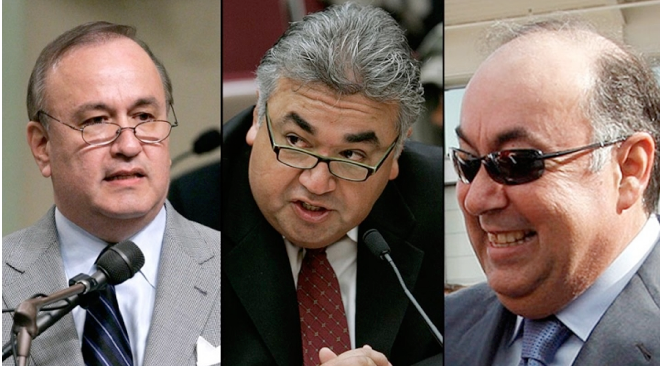
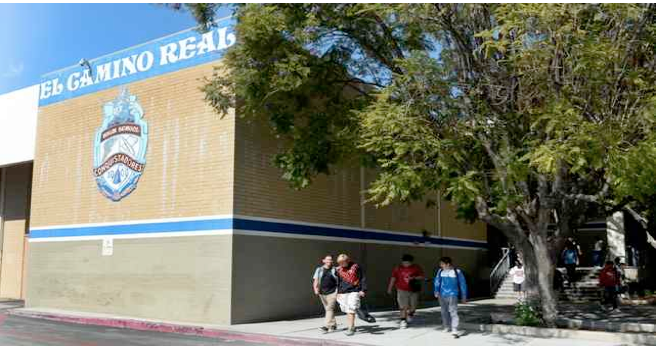

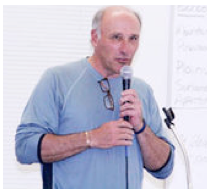 David De Pinto, (photo) president of
David De Pinto, (photo) president of 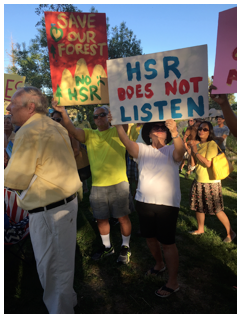 So when I see a group of stakeholders give of their time, energy and money to stand up to the entrenched politicians I want to shout hurray!!!! On the whole, I think Governor Brown has done a good job but this ... one of his legacies ... has too many bad consequences for too many people.
So when I see a group of stakeholders give of their time, energy and money to stand up to the entrenched politicians I want to shout hurray!!!! On the whole, I think Governor Brown has done a good job but this ... one of his legacies ... has too many bad consequences for too many people. 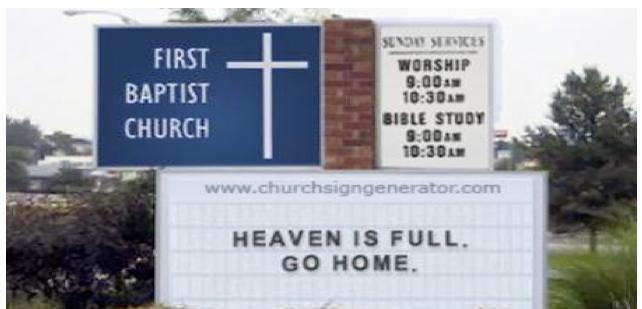

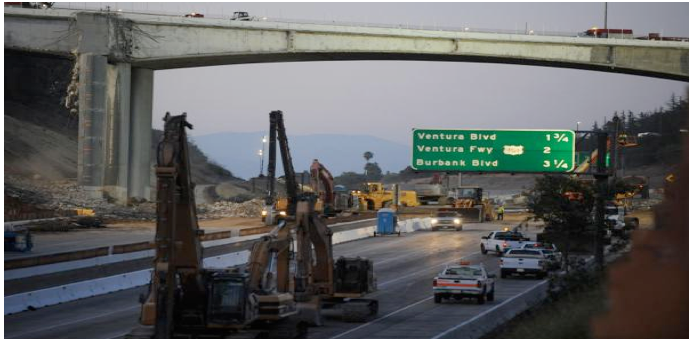
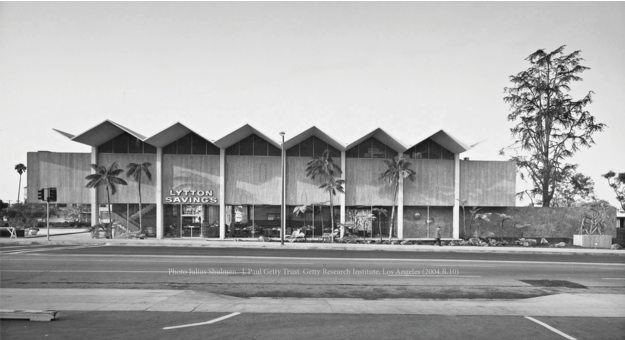
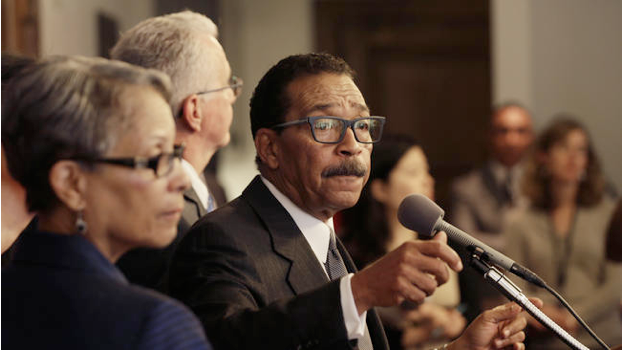
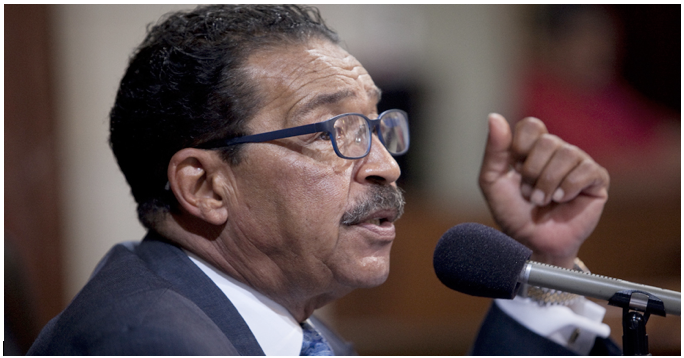
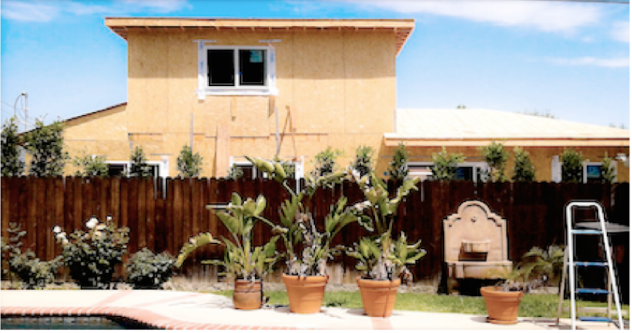
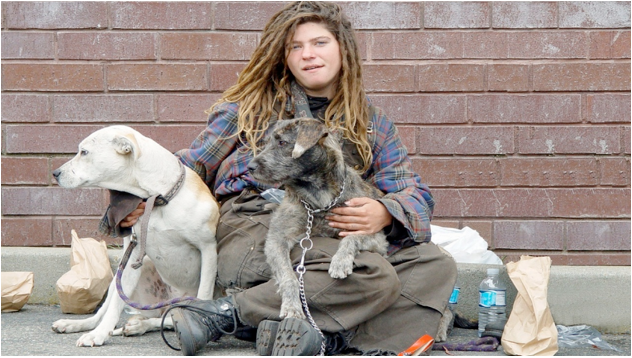


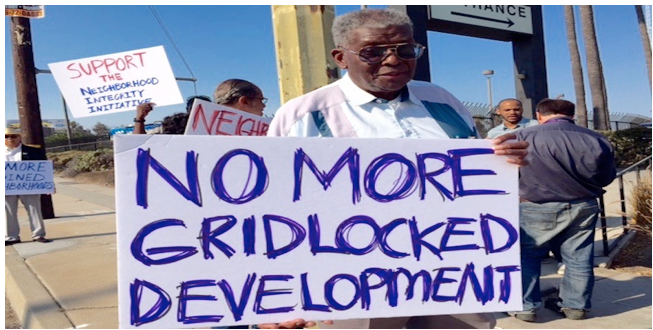

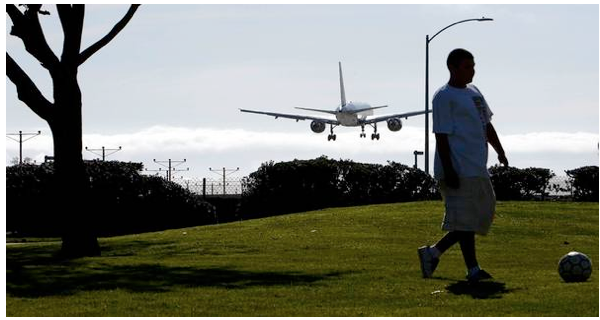
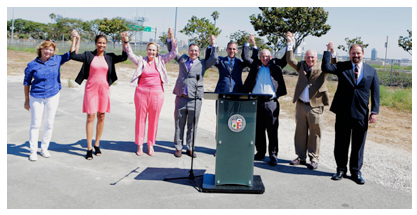 When Democrats, Republicans, Progressives, and Tea Partiers all come together to make a stand, there must be a good cause behind that stand.
When Democrats, Republicans, Progressives, and Tea Partiers all come together to make a stand, there must be a good cause behind that stand. 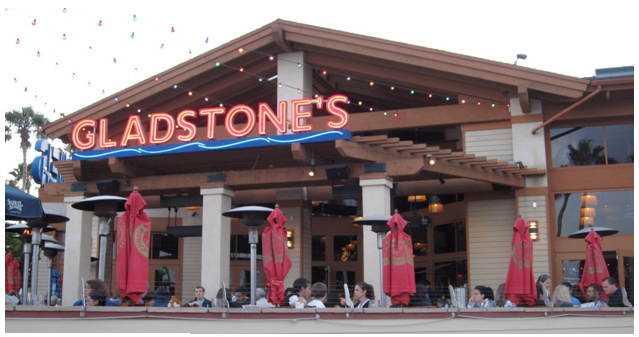

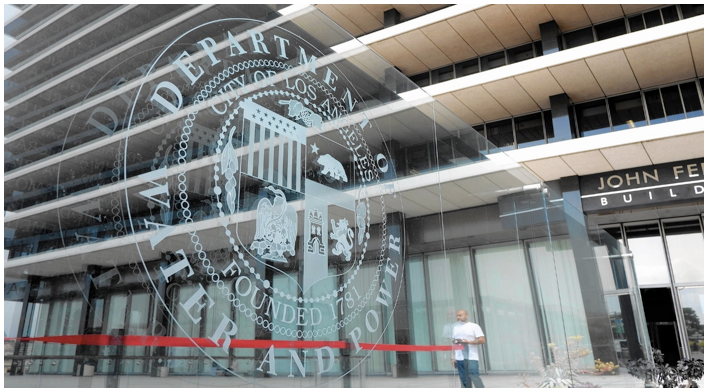
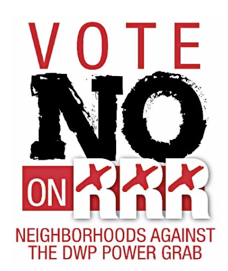 It is wrong for lovers of open, transparent, accountable government, and horrible for enthusiasts of public power.
It is wrong for lovers of open, transparent, accountable government, and horrible for enthusiasts of public power. 
 The case of Israel Stinson, as described in the Los Angeles Times by
The case of Israel Stinson, as described in the Los Angeles Times by 















